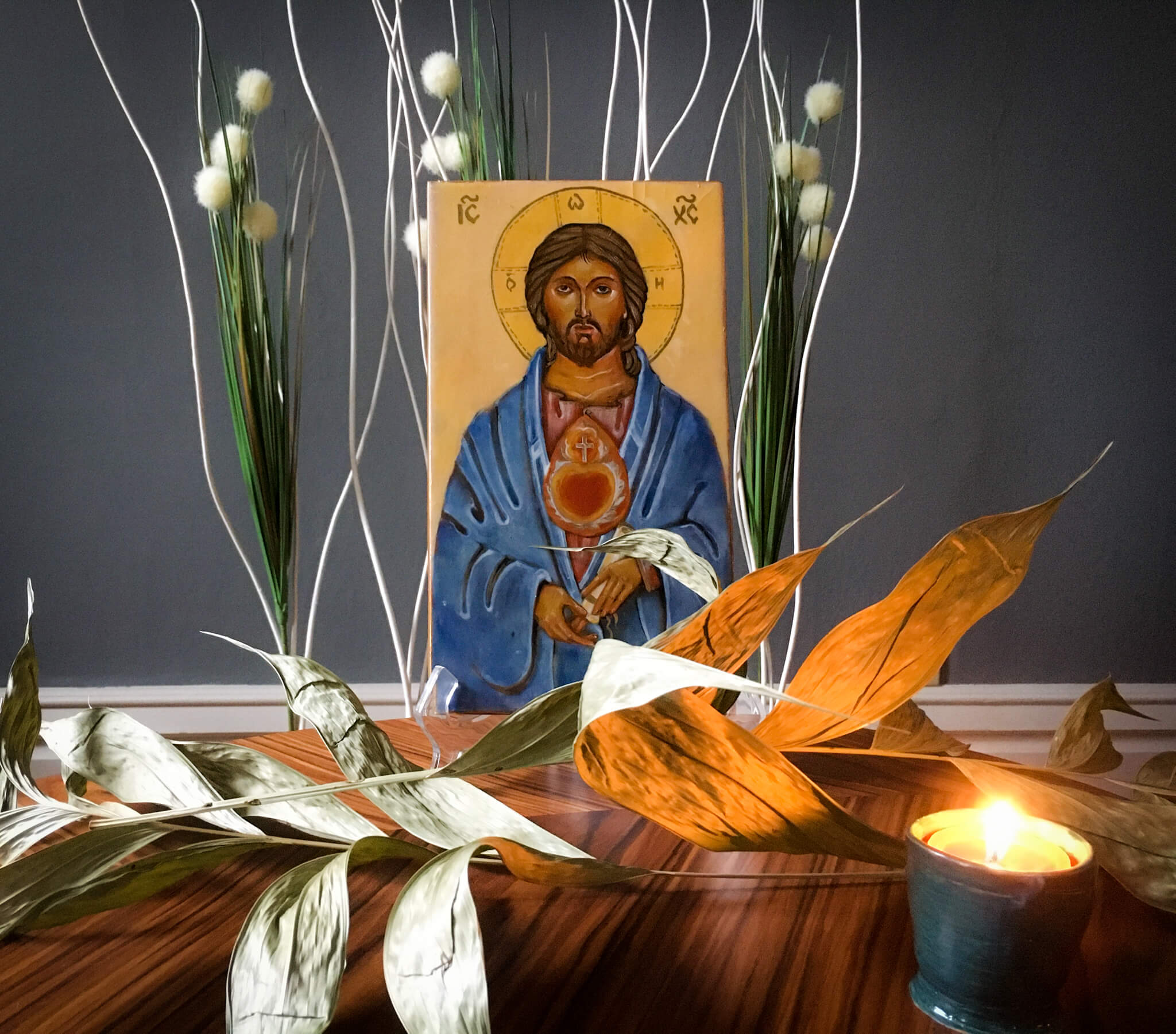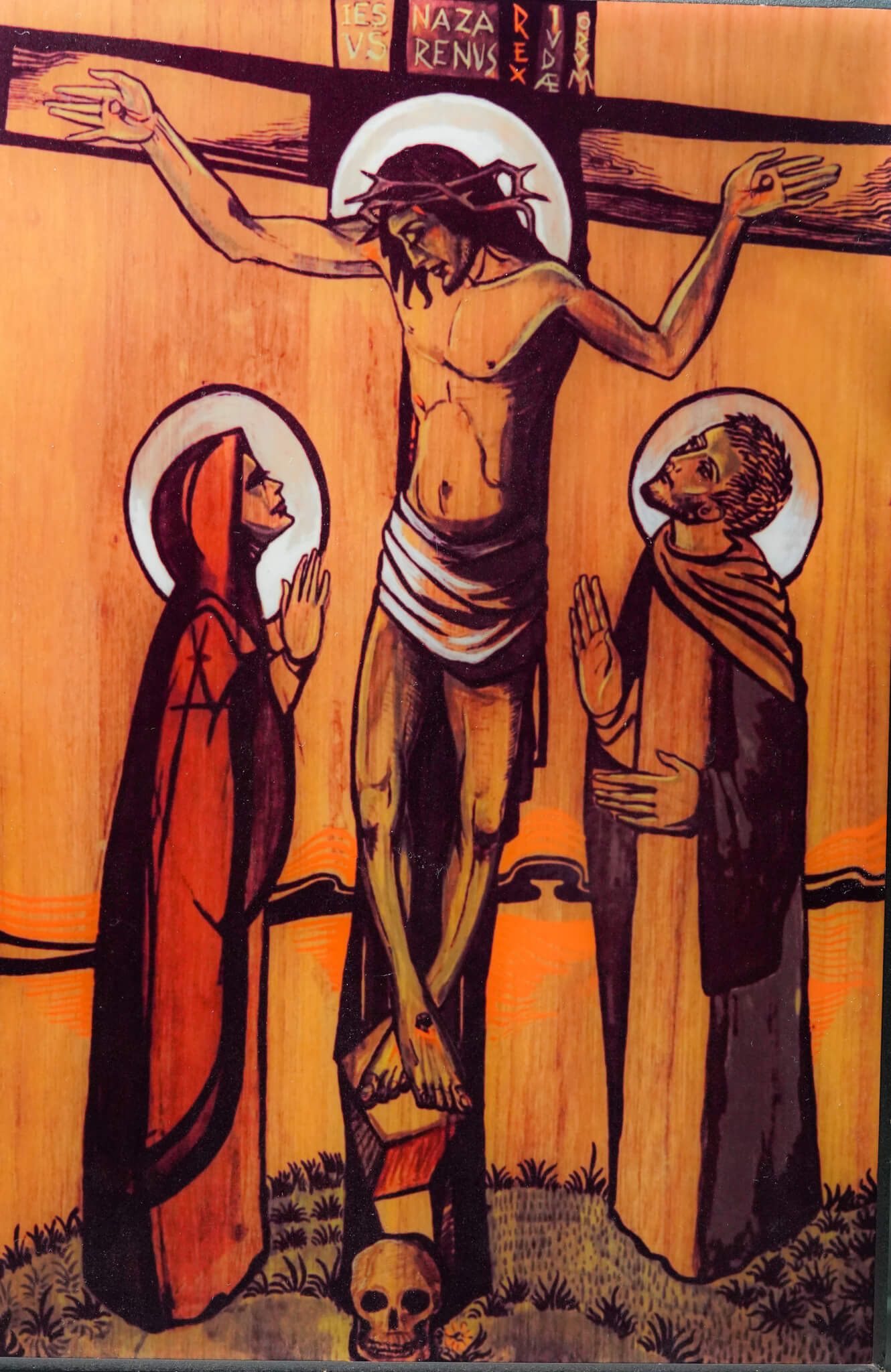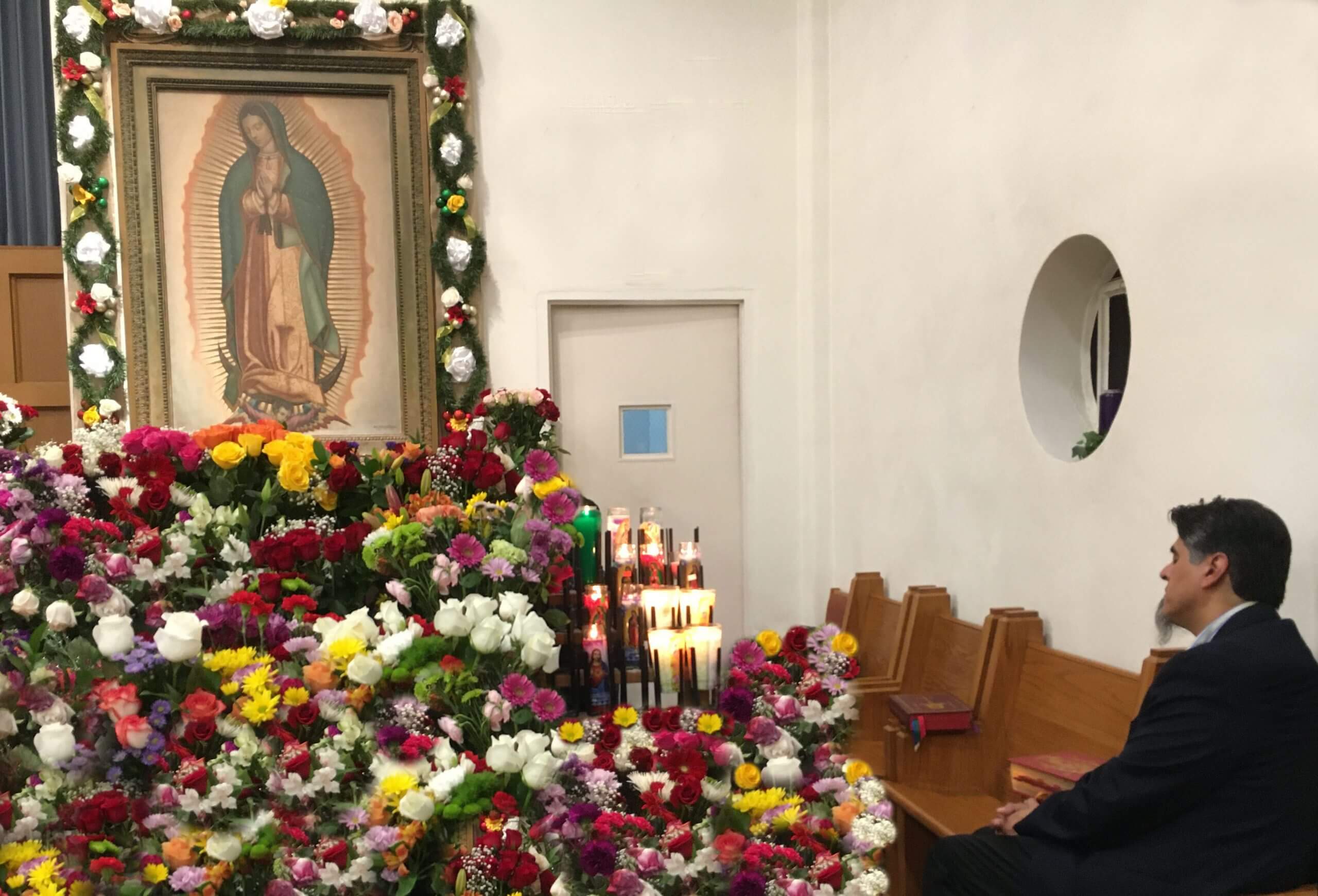COVID-19 Context and Horizon
 In our concern and care for one another, we are finding narratives helping us organize our thoughts and order our feelings, especially as we strive to process our sorrow, pain and the reality of death. While the severity and intensity of this devastating global pandemic unfolds, we are also witnessing a horizon of social, scientific, political, and spiritual responses.
In our concern and care for one another, we are finding narratives helping us organize our thoughts and order our feelings, especially as we strive to process our sorrow, pain and the reality of death. While the severity and intensity of this devastating global pandemic unfolds, we are also witnessing a horizon of social, scientific, political, and spiritual responses.
Communities around the world are finding new and creative ways to express human and spiritual solidarity. In our Catholic community, in particular, bishops and pastoral staff across the different dioceses are collaborating and providing material and spiritual resources, as well as incorporating new virtual modalities of spiritual accompaniment and pastoral care. Most emblematic and spiritually consoling for Catholics world-wide has been the virtual prayers and nearness of Pope Francis.
Truly, no one could have imagined this expansive and overwhelming pandemic crisis. Paradoxically, this experience of uncertainty, social distancing, fear, suffering, and death has prompted heroic acts of kindness and sacrifice, especially among healthcare professionals and first responders. It is in solidarity and hope that I raise the following themes from our Catholic Hispanic mística or spirituality. In the Catholic Hispanic context, mística refers to our cultural, quotidian spirituality or ordinary spiritual pozo (wellspring) where we encounter the living God.
Themes from our Catholic Hispanic Mística: Contemplation, Consolation and Community
 For many Catholic Hispanics, it is customary to have an altarsito or “small home-altar.” These altarsitos are places or niches of prayer, reflecting particular family devotions to Jesus, Mary and the saints. In most instances, the altarsitos will also serve as sacred spaces of remembrance, where pictures of deceased loved ones are placed. Theologically, the altarsito falls within the larger sacramental matrix of religiosidad popular (spirituality of the people) or religious inculturation, bringing together various traditional practices and the Gospel message.
For many Catholic Hispanics, it is customary to have an altarsito or “small home-altar.” These altarsitos are places or niches of prayer, reflecting particular family devotions to Jesus, Mary and the saints. In most instances, the altarsitos will also serve as sacred spaces of remembrance, where pictures of deceased loved ones are placed. Theologically, the altarsito falls within the larger sacramental matrix of religiosidad popular (spirituality of the people) or religious inculturation, bringing together various traditional practices and the Gospel message.
At a time when many of us are re-discovering our sense of being a domestic church, the altarsito in our homes serves as a tangible reminder of our need to draw closer to God. Like in our Christian use of sacred art, music, texts, icons, the aesthetics and physicality of the altarsito naturally elevate our bodies, minds and hearts to the presence of God. And in this familial and ordinary way, the altarsito connects us to our ancient Catholic Christian practice of contemplatio or contemplation.
Furthermore, by contemplating the sacred images and symbols placed in the altarsito, our anxieties, brokenness, fears, joys, hopes and dreams find genuine and enduring spiritual direction and consolation. Like many holy men and women before us, we recognize that it is only in the nearness to the altar of God that our deepest hunger and thirst are met. The altarsito, then, can be a space where we can contemplate and draw nearer to one another and to what is most sacred and life-giving.
A second theme from our Catholic Hispanic mística is el pésame a María, traditionally experienced during Good Friday of Holy Week. While this Catholic Hispanic ritual has its local variations, the pésame always involves the invitation to go to Mary in order to express our condolences in her hour of great sorrow, loss and mourning. Mary’s joyful fiat now beckons us to be present at her mourning.
 Through the pésame a María, each one of us also experiences more intimately the reality of solitude and abandonment of the Via Dolorosa: the silence, isolation, vulnerability and passion of the cross is ours to hold. At the same time, however, the somber and sober experience of the Via Crucis in our life—then and now—finds grace and respite in the kind gesture captured in our pésame to Mary. Only in and by our pésame, then, can our nearness to the cross continually become a sign of Christian accompaniment and support, rejecting any and every morbid obsession with suffering and death.
Through the pésame a María, each one of us also experiences more intimately the reality of solitude and abandonment of the Via Dolorosa: the silence, isolation, vulnerability and passion of the cross is ours to hold. At the same time, however, the somber and sober experience of the Via Crucis in our life—then and now—finds grace and respite in the kind gesture captured in our pésame to Mary. Only in and by our pésame, then, can our nearness to the cross continually become a sign of Christian accompaniment and support, rejecting any and every morbid obsession with suffering and death.
Significantly, it is in our mutual Marian embrace, full of sorrow and mourning, that we also come closer to our Christian experience of consolatio or consolation. For millennia, our Christian spirituality has reminded us that human suffering is never far from the love, care and mercy of God. In fact, Jesus dying on the cross reveals to us the loving consolation that comes from God to each an everyone of us. Because of Jesus’ obedience and crucifixion, we can never really be alone in our sickness, suffering, passion and death—no matter how expansive or overwhelming our suffering may be. Our solace or pésame with Mary, then, is an essential part of this grace of consolation or manner of being with and for others in Christ Jesus who died for our salvation.
The experience of being with and for others in consolation points us to the third theme of our Catholic Hispanic mística, namely, our spirituality and understanding of Fiesta. At first, it feels a bit counter-intuitive to speak of “fiesta” when we are reflecting on moments of great suffering, sorrow and death. Moreover, we are accustomed to dividing feelings and sorting our emotions into distinct units of sadness or joy, anger or contentment, anxiety or peace, etc. It is difficult for us to imagine disparate emotions inhabiting a common spiritual home.
Yet, we know from personal experience that our lives are not always neatly compartmentalized. Our ordinary living comprises a healthy measure of ambiguity, ambivalence and paradox. In fact, a great deal of emotional and spiritual maturity entails learning to navigate and balance complex feelings, attitudes, issues and situations. Indeed, our lives are a confluence of interrelated emotions and intersecting identities and events. It is within this thick narrative and layered complexity of life that we discover our hunger and longing for community, unity and solidarity.
In our Catholic Christian tradition this longing for human connection is understood and experienced in our deepest desire for communio or unity-in-diversity. Spiritually, this desire for communion and solidarity with others always entails a movement from egocentrism to greater empathy, especially with those who are rejected and marginalized. Furthermore, this communio is also a visible sign, in faith, pointing to the transcendent reality of our lives: the promise of an inclusive and everlasting commensality.
Like others, the Hispanic community has habitually accentuated this unity-in-diversity in its passion for life and culture. And while the Hispanic community is not uniform, its experiences of suffering and injustice have contributed to its commitment to hope. In the Catholic Hispanic community, in particular, this sense of radical hope has translated into being un pueblo de Dios en camino—a pilgrim people, capable of embracing life’s struggle: la vida es la lucha.
 It is from this relationship between our ordinary lucha (daily struggle) and transcendent hope or affirmation of the goodness and beauty of life that our commitment to be a people of Fiesta springs forth. As a torrent of living water, Fiesta pours out abundantly from our communities into the deepest recesses of our minds and hearts. Like many before us, we, too, are impelled by our Christian imagination and stories to go to the festive table of plenty without reserve: to be where the water, present at Jesus’ baptism, now coalesces in his crucifixion as water and blood, free flowing from his pierced side.
It is from this relationship between our ordinary lucha (daily struggle) and transcendent hope or affirmation of the goodness and beauty of life that our commitment to be a people of Fiesta springs forth. As a torrent of living water, Fiesta pours out abundantly from our communities into the deepest recesses of our minds and hearts. Like many before us, we, too, are impelled by our Christian imagination and stories to go to the festive table of plenty without reserve: to be where the water, present at Jesus’ baptism, now coalesces in his crucifixion as water and blood, free flowing from his pierced side.
It is in this confluence of life and death that our Catholic Hispanic sense of Fiesta finds its truth. Fiesta as our paradoxical attestation that life is abundant, even in the face of death. After all, it is in the testimony (martyrium) of Fiesta—at the hour of uncertainty, suffering, limitation and death—that we find our most authentic self, meaning and purpose. Standing by the foot of the cross, we reach out and go beyond ourselves, grasping firmly to the hope that is ours in Christ’s Resurrection.
Final Thought and Prayer
With you, I am attentive to this painful moment in time. I am keenly aware of the fact that no human words can ever express or fully respond to the reality that confronts us. At the same time, we know that our human words, gestures and acts of kindness matter. Each one of us doing our part, each one of us gathering what is near to us.
With you, then, I hold on to our mística, trusting it will suffice. Indeed, our contemplative altarcitos, our consoling pésame, and our communal fiesta can remind us of our deepest truth: God is with us. Already, the unfinished familiarity of this sorrowful moment summons us to go deeper into the Mystery of faith, hope and love.
~ F. Javier Orozco
